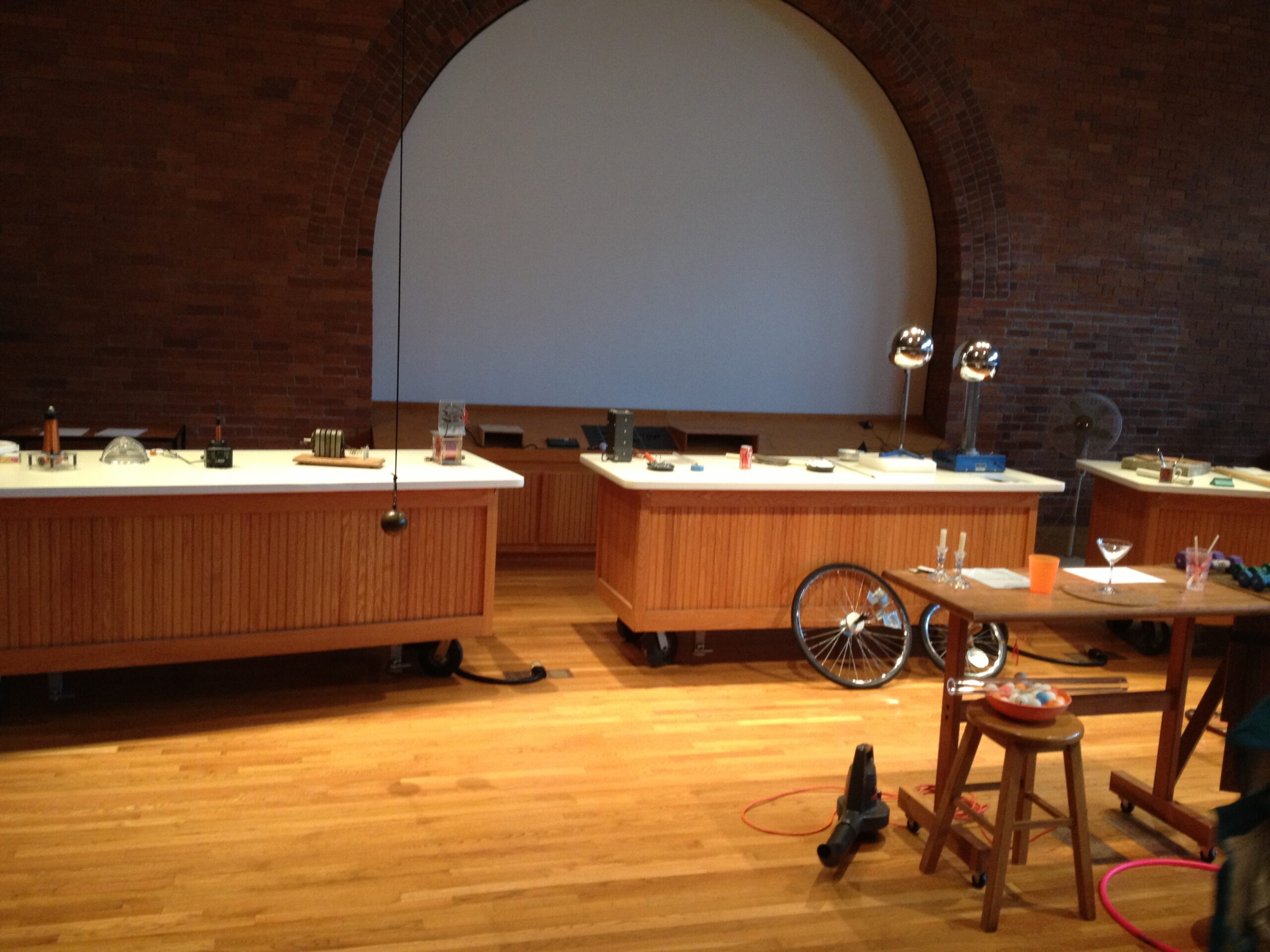 by: Tami O’Connor
by: Tami O’Connor
My husband and I just returned from his reunion at Cornell University. He attended the law school, so, while he reminisced with his friends about this loophole and that exception, I became curious about other events being held at the university. I scanned the various offerings, and though he was interested in the course entitled “Effective Strategies for Conducting Online Legal Research”, the class entitled “Favorite Physics Demonstrations” at 2:00 PM jumped off the page at me. The immutable laws of physics were just the diversion I needed!
I made my way to the Physics building, arriving early. I found plenty of hands-on materials placed all around the lecture hall for the spectators to “play” with. To my delight, I had a “reunion” of my own with many products from Educational Innovations! Singing Rod! Air Zooka! Tornado Tubes! Sound Tubes! A Hand-Cranked generator! And more… All my old friends were here! The presenter’s table was covered with classic physics demonstration items: a Van de Graaff generator, bicycle wheels, magnets, and a host of other items. He had sound devices, and a table covered with glasses filled to varying levels with water. From the 30’ ceiling hung a cable with a ball weighing about 10 pounds. Fog leaked from a container of liquid nitrogen, and a large wooden box stood nearby. I just knew it would be a fun afternoon!

What do paint and perfume have in common? Using Bernoulli’s principle, the presenter, Dr. Philip Krasicky demonstrated how, when air flows faster, its pressure decreases. Using two wide-diameter McDonalds’ straws, he stuck one in a glass of water. With the other, he blew across the open end of the first straw. With the resulting low air pressure, water rose in the straw and sprayed, via the stream of air, onto the front row spectators. He explained that devices like paint sprayers and perfume atomizers employ this principle to spray their products. Clearly, these were some laws we could rely on!
He then brought out a bowl of ping pong balls and a Plexiglas tube with a slightly larger diameter. He put one end of the tube into the bowl and blew across the top with a leaf blower. Ping pong balls rose into the tube and were sprayed (much like water in the prior experiment) across the room. The crowd loved it! What a terrific demonstration of Bernoulli’s principle.The professor then lit a match. His assistant held it only a few feet in front of the crowd. He defied us to blow it out. Despite lots of huffing and puffing (and perhaps with even more hot air than the law school presentations) we could not extinguish the flame.
About 30’ away, however, the professor placed the large wooden box. On the back was a flexible membrane. On the front was a circular hole. He aligned the box with the candle and tapped the back. The resulting shot of air instantly put out the flame! Of course, we could not see the movement of the air…only the result of it.
So, Dr. Krasicky poured liquid nitrogen into the box, and a dense fog started to ooze out. He tapped the membrane again, and this time we could see the ring of fog emanate from the hole and immediately extinguish the flame. He demonstrated a few more toroidal bursts, which we could feel (and see) even across the lecture hall.
Dr. Krasicky then conducted the classic demonstrated for the Law of Conservation of Energy. Standing on one side of the room, he pulled back, all the way to his nose, the wrecking ball hanging from the ceiling. He let it go, and it swung gracefully to the other side of the room. It began to swing back, and the crowd moved forward on their seats. It neared his nose but stopped an inch or two away. The crowd sat back with relief, realizing that we (and he) had had nothing to worry about. The pendulum could not swing to a height higher than the point at which it was released. Another law of physics had proven true. In a final, fitting touch, reminiscent of Sandra Bullock’s character in Miss Congeniality, Dr. Krasicky played Far Above Cayuga’s Waters, the Cornell fight song, on the partially-filled wine glasses also known as a glass harp. He explained about vibration, sound, and resonance.
These laws I can handle; I can’t wait to return to Cornell. Go Big Red!